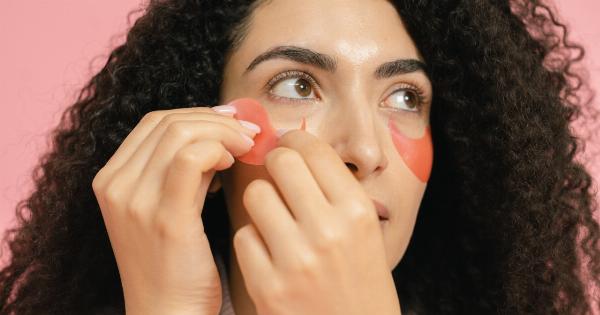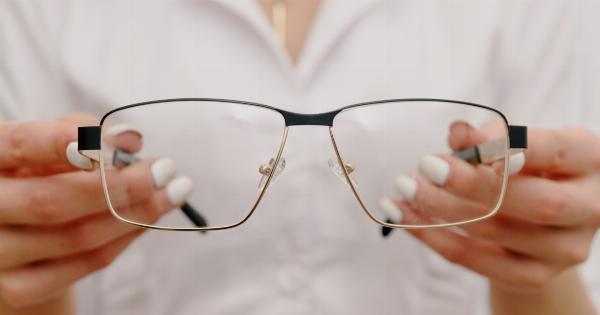Conjunctivitis, commonly known as pink eye, is a highly contagious eye infection that affects people of all ages, including children. Childhood conjunctivitis can cause considerable discomfort and inconvenience for both the child and their parents.
Understanding the causes, symptoms, and treatment options for this condition is essential for early diagnosis and effective management.
Causes of Childhood Conjunctivitis
Childhood conjunctivitis can have several underlying causes, including:.
- Viral Infections: Viral conjunctivitis is the most common form of conjunctivitis in children. It is typically caused by a virus such as adenovirus, which can also cause the common cold. Viral conjunctivitis is highly contagious and can easily spread from person to person.
- Bacterial Infections: Bacterial conjunctivitis is another common cause of pink eye in children. It is often caused by bacteria such as Staphylococcus aureus or Streptococcus pneumoniae. Bacterial conjunctivitis is also highly contagious and spreads through direct contact with contaminated surfaces or discharge from the infected eye.
- Allergies: Allergic conjunctivitis occurs when the eyes react to allergens such as pollen, pet dander, or dust mites. This form of conjunctivitis is not contagious and is often accompanied by other allergy symptoms like sneezing, itching, and a runny nose.
- Chemical Irritants: Exposure to certain chemicals or irritants can also cause conjunctivitis in children. This may include exposure to chlorine in swimming pools, smoke, or other irritating substances.
Symptoms of Childhood Conjunctivitis
The symptoms of childhood conjunctivitis may vary depending on the underlying cause. However, some common symptoms include:.
- Redness: The white part of the affected eye becomes red or pink.
- Itching: Children with conjunctivitis often experience itching and a constant urge to rub their eyes.
- Watery Discharge: The affected eye may produce a watery or sticky discharge, especially in bacterial or viral conjunctivitis.
- Swelling: The eyelids may become swollen, making it difficult for the child to fully open their eyes.
- Sensitivity to Light: Children with conjunctivitis may experience sensitivity to light, also known as photophobia.
- Gritty Sensation: Some children may complain of a sandy or gritty feeling in their eyes.
- Tearing: Excessive tearing or tearing that is out of the ordinary may indicate conjunctivitis.
Diagnosing Childhood Conjunctivitis
If childhood conjunctivitis is suspected, it is important to consult a healthcare professional for an accurate diagnosis.
The doctor will typically conduct a thorough examination of the affected eye and inquire about the child’s symptoms and medical history. In some cases, the doctor may decide to perform further tests, such as collecting a sample of the eye discharge for laboratory analysis, to identify the specific cause of conjunctivitis.
Treatment Options for Childhood Conjunctivitis
The treatment for childhood conjunctivitis will depend on the underlying cause and severity of the infection. Here are the common treatment options:.
- Viral Conjunctivitis: Viral conjunctivitis is a self-limiting condition that usually resolves on its own within a week or two. Treatment primarily focuses on symptom relief through the use of cold compresses, over-the-counter artificial tears, and antihistamine drops to alleviate discomfort. It is essential to practice good hygiene, such as regular handwashing, to prevent the spread of infection.
- Bacterial Conjunctivitis: Bacterial conjunctivitis often requires treatment with antibiotic eye drops or ointment prescribed by a healthcare professional. The medication helps eliminate the bacteria causing the infection and speeds up recovery. It is important to complete the full course of treatment to prevent reinfection or the development of antibiotic resistance.
- Allergic Conjunctivitis: Treatment for allergic conjunctivitis focuses on avoiding triggers and managing symptoms. The child may be advised to avoid known allergens, use cold compresses to reduce inflammation, and take over-the-counter antihistamine eye drops or oral antihistamines to alleviate itching and redness. In severe cases, the doctor may prescribe stronger medications.
- Chemical Conjunctivitis: When conjunctivitis is caused by exposure to chemicals or irritants, the primary treatment involves rinsing the affected eye thoroughly with clean water for at least 15 minutes. If the symptoms persist, medical attention should be sought to assess the extent of damage and determine appropriate treatment.
Preventing the Spread of Childhood Conjunctivitis
Preventing the spread of childhood conjunctivitis is crucial to protect other children and prevent reinfection. Here are some preventive measures:.
- Hand Hygiene: Regular handwashing is essential to prevent the spread of conjunctivitis. Encourage your child to wash their hands frequently, especially after touching the infected eye or surfaces that may be contaminated.
- Avoid Eye Rubbing: Teach your child not to rub or touch their eyes, as this can spread the infection to the other eye or to other individuals.
- Personal Items: Avoid sharing personal items such as towels, pillowcases, or eye cosmetics between infected and non-infected individuals.
- Cleaning and Disinfection: Clean and disinfect commonly touched surfaces, such as doorknobs, toys, and countertops, to reduce the risk of cross-contamination.
- Stay Home: If your child has conjunctivitis, it is important to keep them home from school or daycare until they are no longer contagious, as advised by the healthcare professional.
When to Seek Medical Attention
In most cases, childhood conjunctivitis can be managed at home with over-the-counter remedies and proper hygiene practices. However, medical attention should be sought if:.
- The child experiences severe eye pain or changes in vision.
- The symptoms worsen or do not improve after a few days of home treatment.
- There is persistent yellow or green discharge from the eye.
- There are signs of a secondary infection, such as swelling or redness spreading to the surrounding area.
Conclusion
Childhood conjunctivitis, or pink eye, is a common eye infection among children. It can be caused by viral or bacterial infections, allergies, or exposure to irritants.
Recognizing the symptoms and seeking timely medical attention is crucial for proper diagnosis and appropriate treatment. By following good hygiene practices and taking necessary precautions, the spread of childhood conjunctivitis can be minimized.
If you suspect your child has conjunctivitis, consult a healthcare professional for guidance and care to ensure a swift recovery and protect others from infection.




























